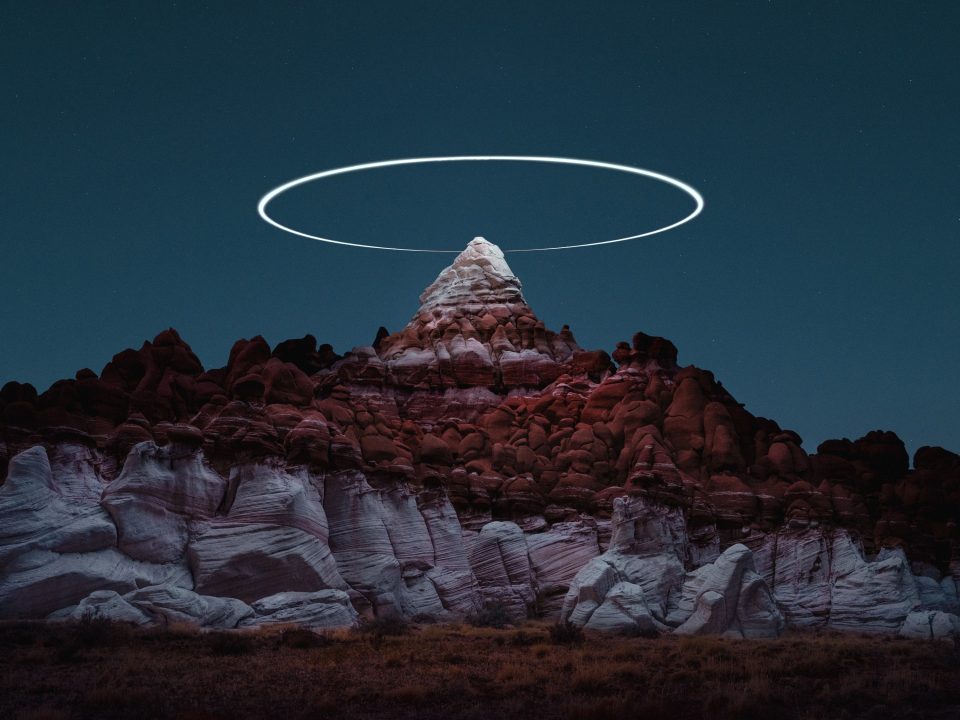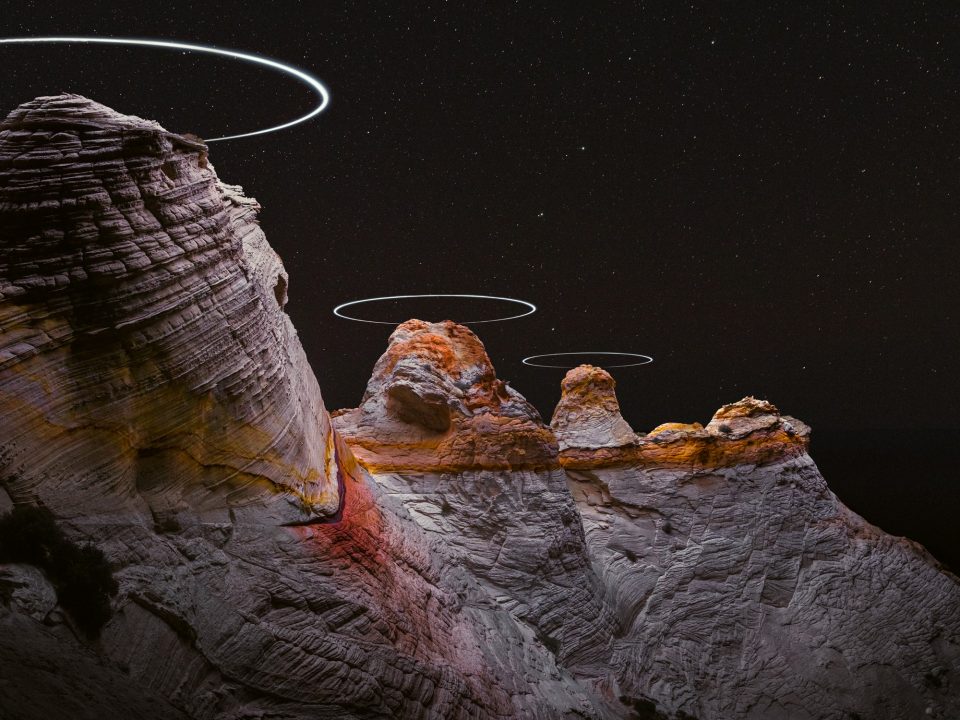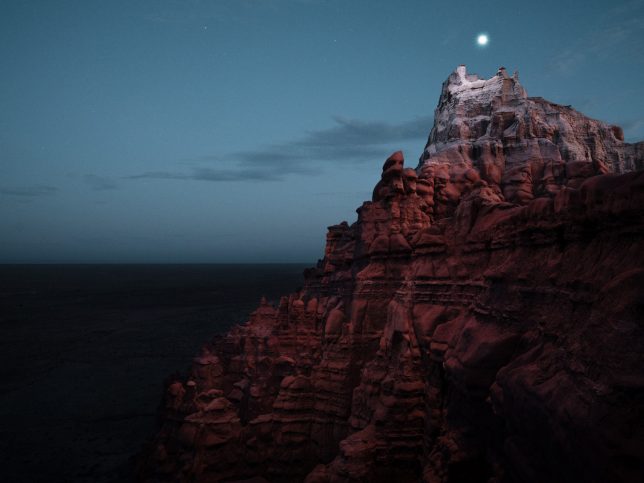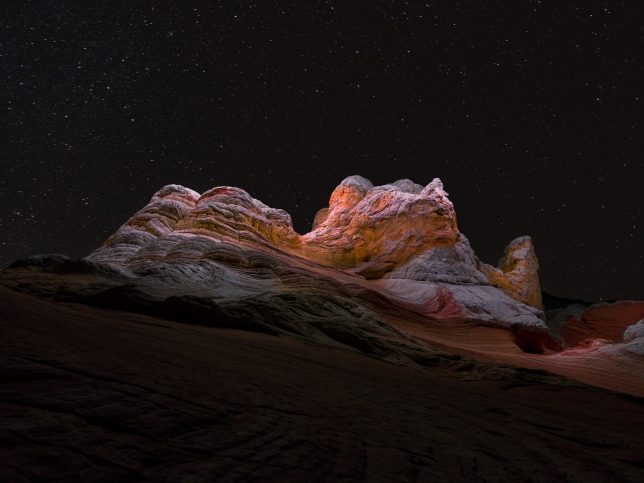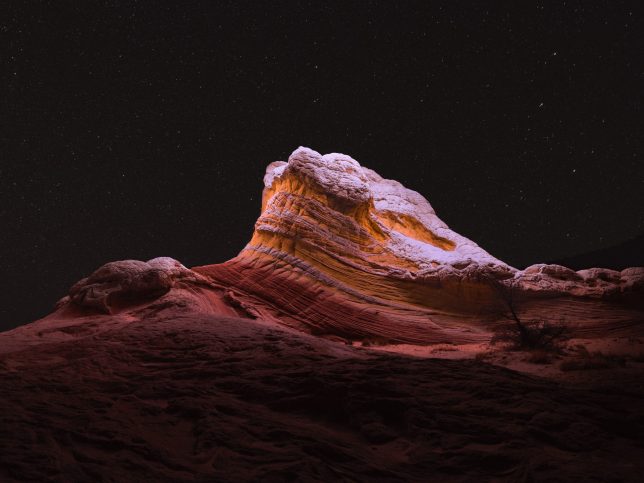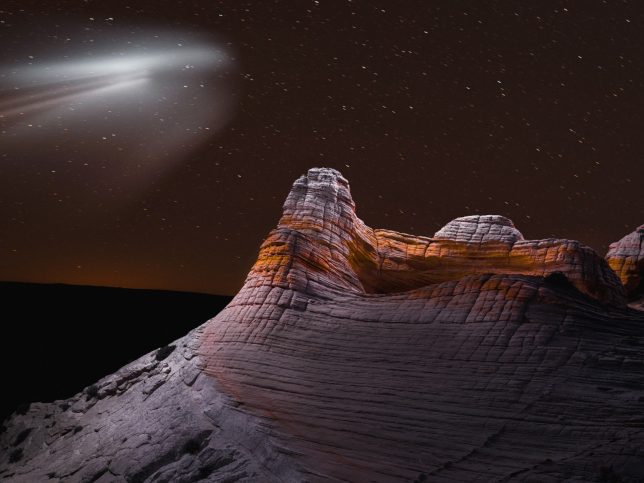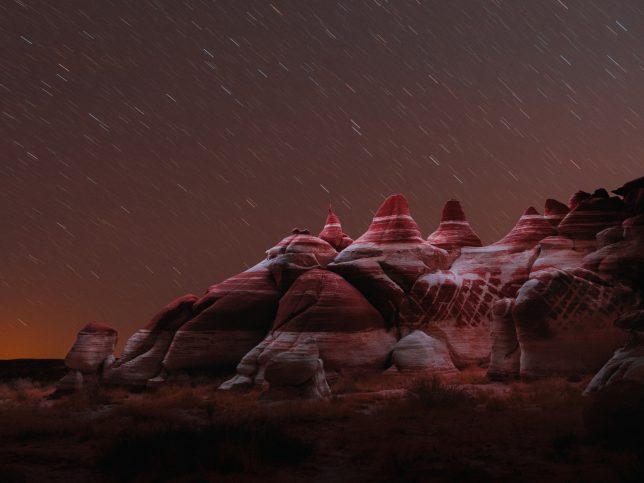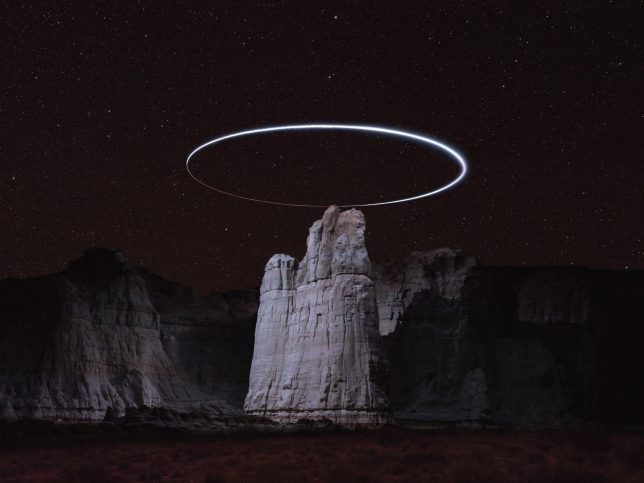Circling drones cast soft light on landscapes below (and create UFO-style patterns in the skies over) gorgeous natural settings in this series of surreal nature images by photographer Reuben Wu.
Dubbed LUX NOCTIS II, this series follows up on a previous set of ground-illuminated works created in a similar vein. But in this case, the use of drone technology adds a fresh dimension to the sequel imagery, both in terms of the quality and source of light as well as the figures created by the aerial micro-vehicles giving it off.
The photographer has traveled around the world to capture sandstone mountains, bubbling volcanoes, gorgeous lakes and rivers, often employing (natural or artificial) light to set the scene.
“Each image is a carefully planned scene consisting of multiple lighting positions,” he explains, “layered to produce a theatrically lit composition. Using the GPS-enabled aerial light/drone in specific positions in space, I am able to create moods of drama and tension through chiaroscuro, and the ability to illuminate isolated features of a scene and exclude unwanted elements.”
“It’s so easy to become numb to conventional depictions of beautiful nature. In casting a new, unfamiliar light, I want people to see that while other planets are fascinating and incredible to us through the eyes of spacecraft and rovers, it is our own planet which has so much grandeur and beauty which is both accessible to us and worthy of preservation and protection.”
Light other time-lapse light art, his works trace patterns that are only fully visible once a photograph is taken, which in turn highlights the exposure time in play within each piece (sometimes also visible through star patterns in the backgrounds).
More about his project and its creator: “Reuben Wu is an artist with a profound interest in the ways that advancing technology can foster new forms of creative expression. Using a Fiilex AL250 in tandem with the 3DR Solo drone and Phase One XF camera system, Reuben has developed a method for selectively ‘painting’ nocturnal landscapes with light via multiple exposures.”
